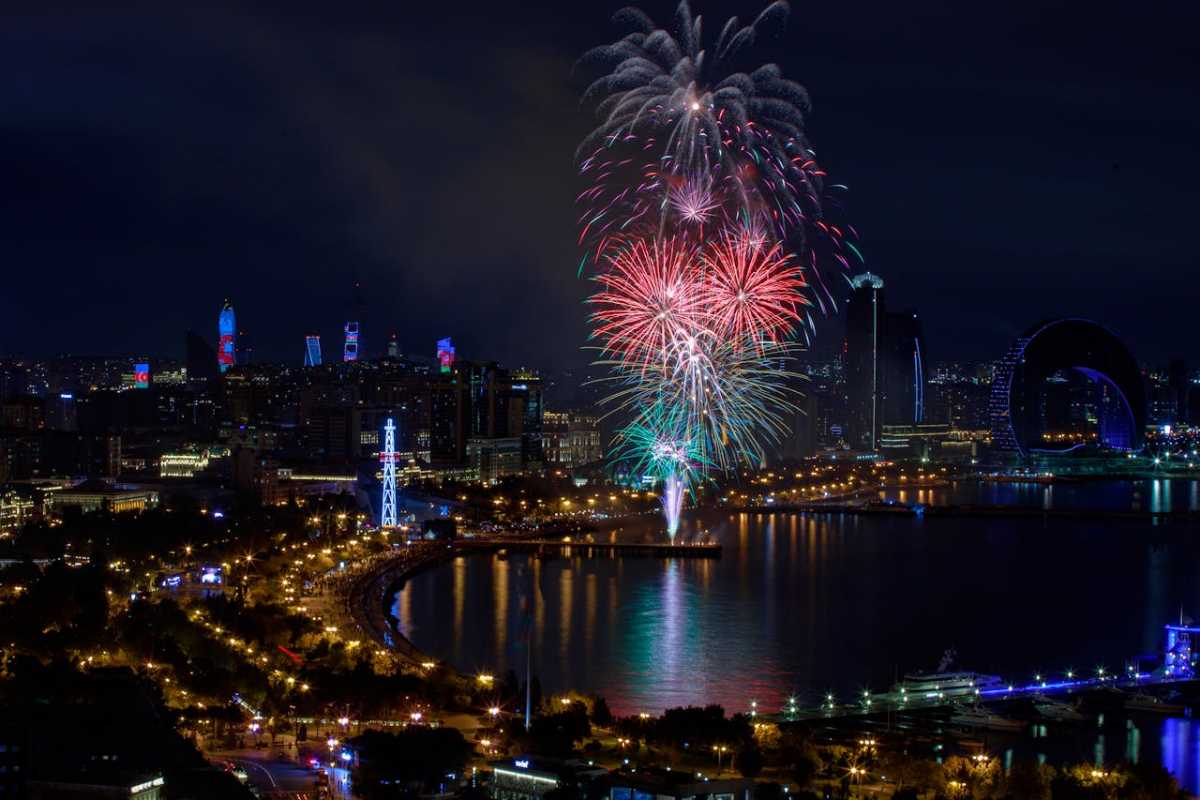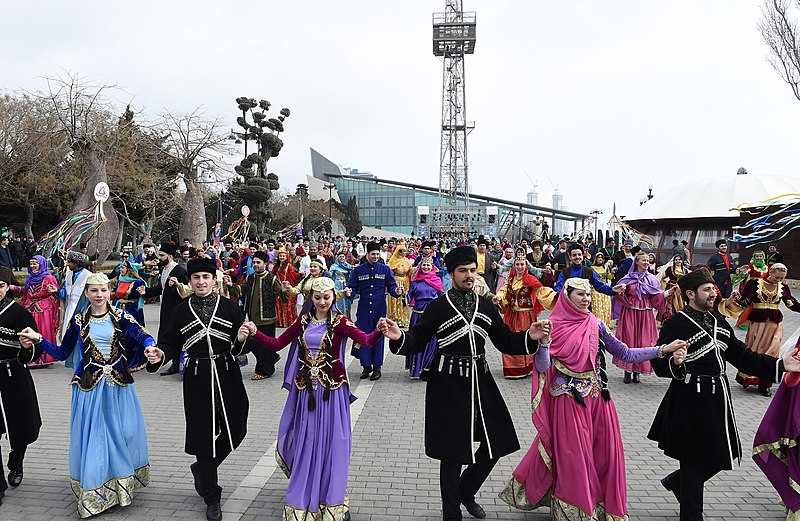New Year celebrations in Azerbaijan are a vibrant blend of cultural traditions, festive customs, and joyful gatherings. From observing the secular New Year's Eve on December 31st to embracing the spring festival of Novruz, the Azerbaijani people welcome the arrival of the new year with enthusiasm and excitement.
New Year's Eve Festivities

In Azerbaijan, New Year's Eve is a time for lively festivities and joyous celebrations. Families and friends come together to bid farewell to the old year and welcome the new one with hope and optimism. The streets of major cities are adorned with colorful lights, decorations, and festive displays, creating a cheerful atmosphere.
When the clock strikes midnight, the sky over Azerbaijan is illuminated with a dazzling display of fireworks, signaling the arrival of the new year. In Baku, crowds gather in the city's main squares, such as Fountain Square and Boulevard, to join in the festivities and watch the fireworks lighting up the night sky.
Novruz Bayrami: The traditional New Year

Novruz, also spelled Nowruz or navroz, marks the arrival of spring and the beginning of the traditional new year in Azerbaijan. Celebrated on March 20th or 21st, navroz is a deeply rooted cultural tradition that dates back thousands of years. The celebrations for Navroz include various traditional rituals and customs, folk music and dance performances.
Historical Significance of Navroz
Navroz has deep historical roots, with origins dating back thousands of years. Historians and scholars trace its origins to ancient Babylon, where it was celebrated as a 12-day festival marking the onset of spring. Over time, navroz became intertwined with Zoroastrian traditions and later adopted by Islamic culture. Despite its ancient origins, navroz continues to be cherished and celebrated by Azerbaijanis today. The essence of navroz lies in its symbolism, reflecting themes of renewal, purification, and abundance. The transition from winter to spring is metaphorically represented through various rituals and customs, each carrying profound meaning and significance.
Navroz Table

One of the most important customs is the preparation of the festive table, known as "khoncha," which is adorned with seven symbolic items representing abundance, prosperity, and renewal. These items typically include germinated sprouts, nuts, dried fruits, candles and other traditional items. The table includes seven varieties of food, all of which must begin with the letter 'S' in Azerbaijani. Some common examples of these foods include sumakh (a type of spice), sirke (vinegar), sud (milk), samani (sprouted wheat), and sebzi (fried meat with greens). Alongside the array of food, a mirror is placed on the khoncha, symbolizing happiness and reflection. Additionally, colored eggs are arranged on the mirror, signifying fertility, renewal, and the cycle of life.
Bonfire

Another central aspect of Novruz festivities is the ritual of jumping over a bonfire to symbolize purification and the triumph of good over evil. Families gather around bonfires in public squares or parks, where they dance, sing traditional songs, and exchange well-wishes for the new year. The bonfires are believed to ward off evil spirits and bring blessings for the year ahead.
Traditionally, individuals jump over bonfires on specific Tuesdays leading up to Navroz, signifying the awakening of nature and the cleansing of past impurities.
Customs and beliefs
Navroz is a time for families to come together and celebrate unity and tradition. According to custom, all family members gather at home on the first day of navroz, ensuring good fortune and blessings for the coming year. Doors are kept open, and lights are left on throughout the night to ward off misfortune and invite prosperity. Various rituals aim at forecasting the future and determining the year's characteristics.As per tradition, the initial day of Navruz signifies the onset of spring, followed by summer on the subsequent day, autumn on the third, and winter on the fourth. If the first day experiences calm and dry conditions, it means agricultural activities will be good in the upcoming spring. If the weather is rainy and windy, it suggests a similarly wet and turbulent spring.
Celebrating New Year in Azerbaijan is a joyous occasion that brings people together to share in the spirit of renewal, hope, and optimism. Azerbaijani people welcome the new year with open hearts and a sense of unity. From colorful street decorations to age-old rituals, the spirit of celebration fills the air, making New Year a truly magical time in Azerbaijan.
time in Azerbaijan.